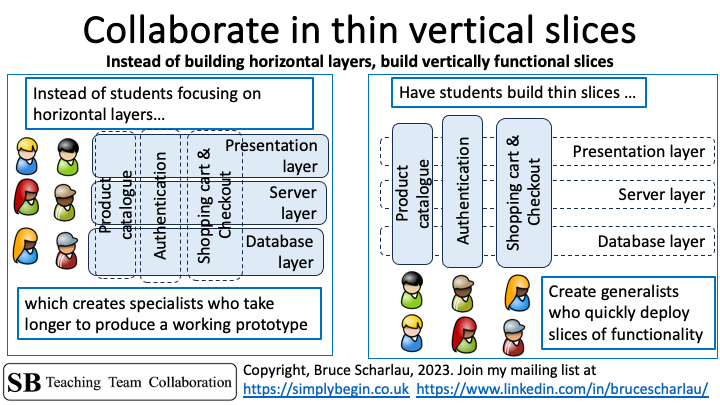Build thin vertical slices instead of horizontal layers
Students tend to think in horizontal layers as described in the textbooks. The books show the nice layers, so they want to build it that way. One team member becomes the database person. Another team member focuses on the server, while a third explores options for the web or mobile interface. They all seem happy as they start building their team projects.

Focus on features instead of layers
When they are working on layers, students need to communicate across the layer boundaries. This slows down discovery and increases the likelihood of rework when the database folks discover the server folks used different naming conventions. The work tends to also be done in different branches, which are integrated infrequently. This slows down development.
Asking people to focus on features instead means the people on the ‘catalogue’ feature can do all of the relevant layers at the time. They can also work independently of the other features to some extent too. Everyone can work on the same branch and see each others’ progress and changes. This speeds up development.
When students finish a feature, then they can move to another feature. This spreads knowledge across the team too, which builds shared understanding. In addition, it also lets students learn more about the different parts of the application, which aids their knowledge of software development.
Tell your students to team up on features so that they develop their prototypes faster. Thin vertical slices win over horizontal development.
This post is part of a project pulling together my materials and ideas about Teaching Team Collaboration: the Human-Side of Software Development for software development to students. If you’d like to be notified of future posts, then please sign up for more using the adjacent form.